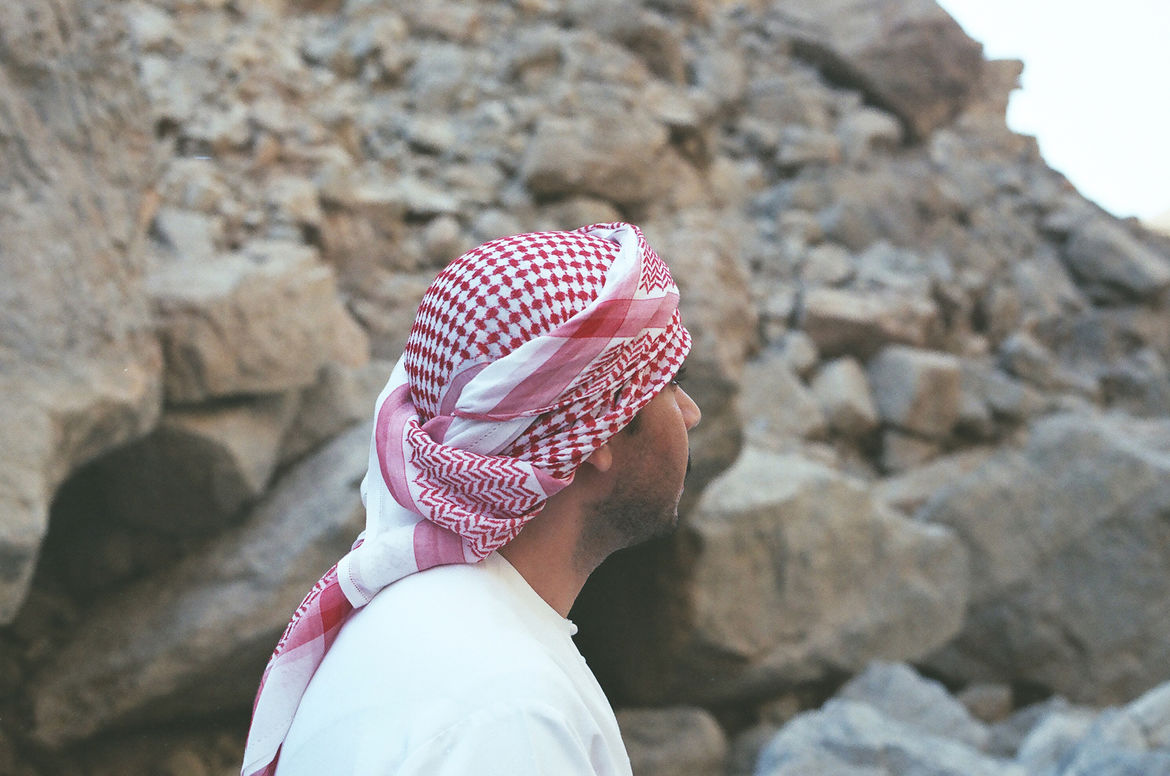
By Saleh S. Matar
Running from the Musandam Peninsula in the north to Sur in Oman, the Hajjar Mountains (meaning ‘stone mountains’ in Arabic) features rugged yet picturesque views of carved canyons, rocky valleys, caves and springs. Tucked away in this extraordinary environment is a dwindling population of people who live a very traditional way of life in the Hajjar Mountains in Ras Al Khaimah.
From Sir Richard Francis Burton’s first book ‘Goa and the Blue Mountains’ to the 2014 Qinghai World Mountain Documentary Festival, mountain life and high-altitude environments have long captured the attention and curiosity of many individuals and institutions around the world. In the UAE, however, Emirati photographer Reem Falaknaz aims to be the first ever to document the country’s mountain life.
Falaknaz is a 28 years old visual communication graduate, TV producer and director from Dubai. Tired of the conventional media broadcasts about the UAE, the undercovered culture and lifestyle in the mountains caught her attention.
“Documenting mountain life has been done all over the world but not here in the UAE and what I have done so far is just the start,” Falkanaz told The National. “I feel happy that I am getting a chance to explore this life that is disappearing and there is so much more for me to do.”
Founded by New York University Abu Dhabi, Forming Intersections and Dialogues or FIND research programme awarded Falaknaz a fellowship in January to document and “explore the unique transnational history of the UAE in a contemporary and/or scholarly context.”
“My interest is in documenting the stories of the people who live in the UAE and with the fellowship; I wanted to do something different from what I normally do, which is very city-based. I wanted to go further out and to find the stories there,” she said.
Driven by the scarcity of the region’s modern history documentation, Falkanaz sought to travel across the UAE’s lesser known area to explore and document the inhabitants’ daily life, conversations and livelihood through photography, video and audio. However, her project, The Place of Perpetual Undulation, was ultimately limited to Ras Al-Khaimah due to funding and time restraints.
“Everything is transitory and momentary and I feel blessed to be able to continue this work and that people are opening up to me,” she said. “There are more and more stories to tell and I hope this project can continue. Three months is not enough.”
Fortunately, in mid July, Falaknaz applied for another fellowship, The Arab Documentary Photography Program. The program is created and funded by Arab Funds for Arts and Culture (AFAC), an independent institution that financially support regional and global individuals and organizations for varied fields of film making, visual arts, literature, research and more. This program in particular endorses creative documentary photographers in the Arab region by providing financial and professional aid.
The opportunity will enable Falaknaz to expand photographic research from Ras Al Khaimah into Fujairah, Sharjah’s east coast and maybe even into Oman.”
With no prior knowledge of the mountains, Falaknaz is guided by photographer Saleh Al Shehhi, whom she describes as a “walking, talking encyclopedia on anything and everything related to mountains both here in the UAE and across the world.” With one person specialized in modern technological arts, and the other in the direction, cultural traditions, and the atmosphere of the mountains, together they are the perfect match for the task.
As a member of one of the UAE’s largest mountainous tribes, Al Shehhuh, Al Shehhi can give Falaknaz’s project and possible future initiatives a unique insight into the world and lives of people living and thriving in these high-altitude terrains.
“It is in our blood. We always come back to the mountains,” said Saleh. “I can understand the mountains. I know its moods, and I can even sense change in seasons and weather. Nature communicates to you; you just have to know how to listen.”





























What a beautiful initiative. Heritage and history should always be cherished and never forgotten.